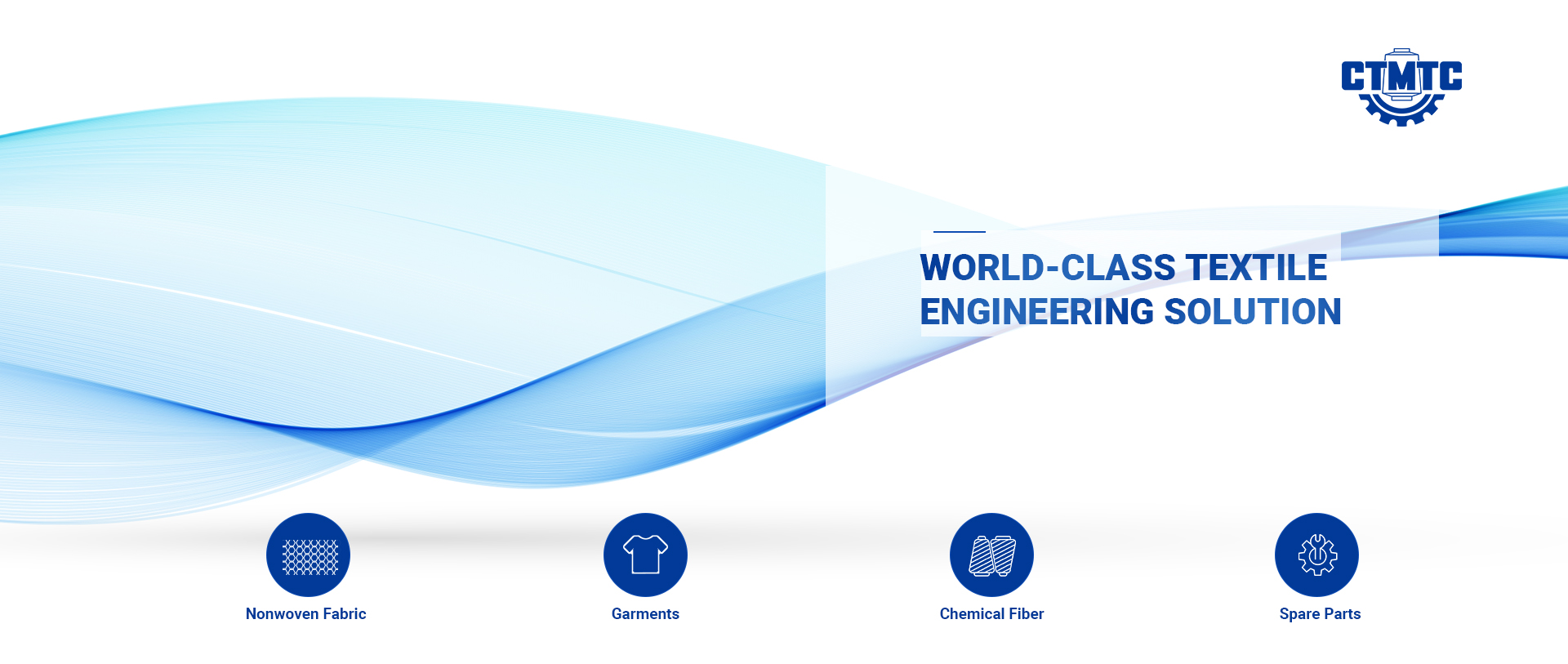Textile fabric post finishing is a technical treatment method that imparts color effect, morphological effect (smooth, suede, starching, etc.) and practical effect (impermeable, non-felting, non-ironing, non-moth, flame resistance, etc.) to the fabric. Post finishing is a process that improves the appearance and feel of the fabric and improves the wearing performance which is important for produce high value add product and increase factory competitive.
So let’s figure out what are they and what they can realize. We are there for you complete textile project solution. Please feel free contact us.
Stentering finishing is a process that makes use of the plasticity of cellulose, silk, wool and other fibers under wet conditions to gradually widen the width of the fabric to the specified size and dry it, at same time stabilize the fabric dimension. In some processes such as scouring and bleaching, printing and dyeing before finishing, the fabric is often subject to warp tension, which forces the fabric to stretch in the warp direction and shrink in the weft direction, and occur other shortcomings, such as uneven width, uneven cloth edges, rough feel, etc. In order to make the fabric have a uniform and stable width, and improve the above shortcomings and reduce the deformation of the fabric in the wearing process, after the dyeing and finishing process is basically completed, the fabric needs to be stentered.
Please check newest stener machine, for more details.
2. Pre—Shrinking
Preshrinking is a process of reducing the shrinkage of fabrics after immersion in water by physical methods. In the process of weaving, dyeing and finishing, the fabric is tensioned in the warp direction, and the buckling wave height in the warp direction is reduced, thus elongation will occur. When the hydrophilic fiber fabric is saturated with water, the fiber swells, and the diameter of the warp and weft yarns increases, which increases the warp buckling wave height, shortens the length of the fabric, and forms shrinkage. When the fabric is dry, the swelling disappears, but the friction between the yarns still keeps the fabric in a contracted state. Mechanical preshrinking is to spray steam or spray to wet the fabric first, then apply
mechanical extrusion in the warp direction to increase the buckling wave height, and then loose dry the fabric. The shrinkage of pre shrunk cotton cloth can be reduced to less than 1%, and the softness of the fabric will be improved due to the mutual extrusion and rubbing between fibers and yarns. The wool fabric can be pre shrunk by relaxation. After being dipped and rolled in warm water or sprayed with steam, the fabric is dried slowly in a relaxed state, so that the fabric shrinks in both the warp and weft directions. Fabric shrinkage is also related to its structure. The shrinkage level of fabrics is often assessed by shrinkage rate.
3.Crease—Resisting
The process of changing the original composition and structure of the fiber, improving its resilience, and making the fabric difficult to crease in wearing is called crease resisting finishing. It is mainly used for pure or blended fabrics of cellulose fiber, and can also be used for silk fabrics.After crease resistant finishing, the recovery property of the fabric increases, and some strength properties and wearing properties are improved. For example, the crease resistance and dimensional stability of cotton fabrics have been significantly improved, and the wash ability and quick drying performance can also be improved. Although the strength and wear resistance will decline to vary degrees, under the control of normal process conditions, its wearing performance will not be affected. In addition to the crease resistance, the breaking strength of viscose fabric also increased slightly, especially the wet breaking strength. However, crease resistant finishing has a certain impact on other related properties, such as the breaking elongation of fabric decreases to varying degrees, the washing resistance varies with the finishing agent, and the washing fastness of dyed products improves, but some finishing agents will reduce the light fastness of some dyes.
4.Heat Setting,
Thermosetting is a process for making thermoplastic fibers and their blends or interwoven fabrics relatively stable. It is mainly used for the processing of synthetic fibers and their blends, such as nylon or polyester, which are easy to shrink and deform after heating. Thermoplastic fiber fabrics will produce internal stress in the textile process, and are prone to wrinkle and deformation under the action of moisture, heat and external force in the dyeing and finishing process. Therefore, in production (especially in wet heat processing such as dyeing or printing), generally, the fabric is treated at a slightly higher temperature than the subsequent process under tension, that is, heat setting, so as to prevent shrinkage and deformation of the fabric and facilitate the subsequent processing. In addition, elastic yarn (filament), low elastic yarn (filament) and bulky yarn can also be produced by heat setting process combined with other physical or mechanical effects
In addition to improving the dimensional stability, other properties of the heat set fabric also have corresponding changes, such as the wet resilience property and the pilling resistance property are improved, and the handle is more rigid; The fracture elongation of thermoplastic fiber decreases with the increase of heat setting tension, but the strength changes little. If the setting temperature is too high, both of them decrease significantly; The change of dyeing properties after heat setting varies with fiber varieties.
Post time: Sep-09-2022

